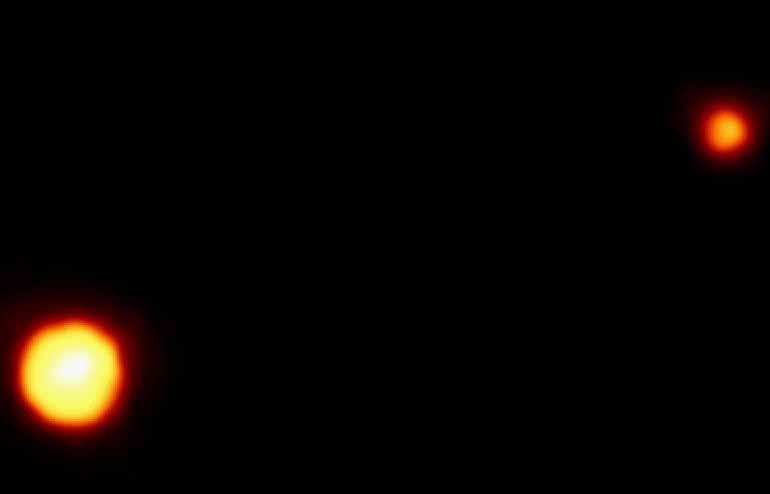August 6, 2003
Pluto
The smallest and usually the most distant planet in our solar system, Pluto is unique as it is neither a terrestrial planet nor a gas giant. Another surprise is its orbit which, rather than being circular and very near the ecliptic plane like the other planets, is highly elliptical and tilted.

Smaller than our Moon, Pluto is a solid body probably composed of rocks and ice. Its surface is at least partly covered with frozen methane and nitrogen and surrounded by a thin, nitrogen-rich atmosphere that evaporates and thickens as the planet nears the Sun. Atmospheric pressure at the surface is 100,000 times less than on Earth.

These remnants of the solar system’s formation, named Varuna, Ixion and Quaoar, are the largest objects in the Kuiper Belt and Pluto is much more like them than a planet.
|
Last updated: May 2003